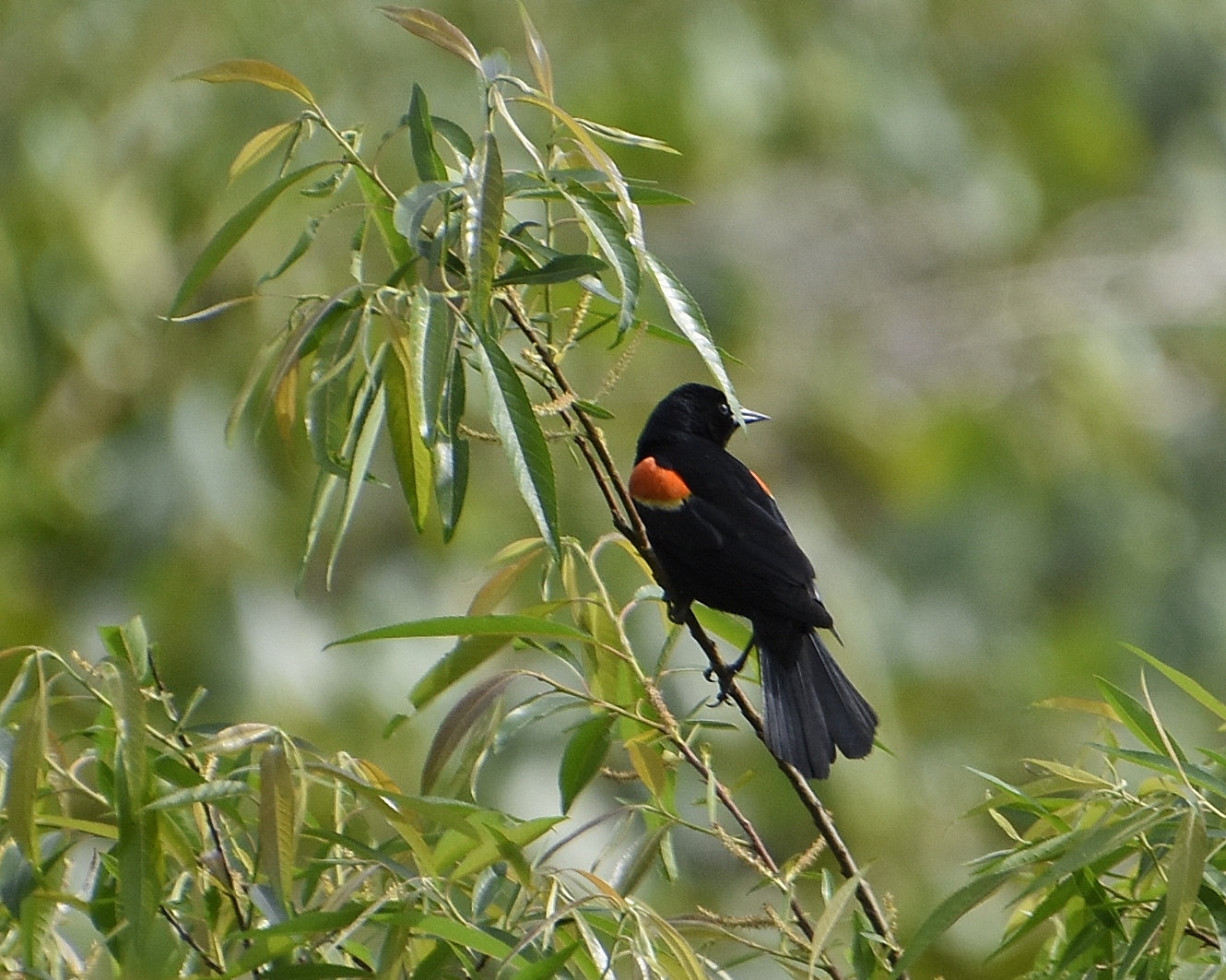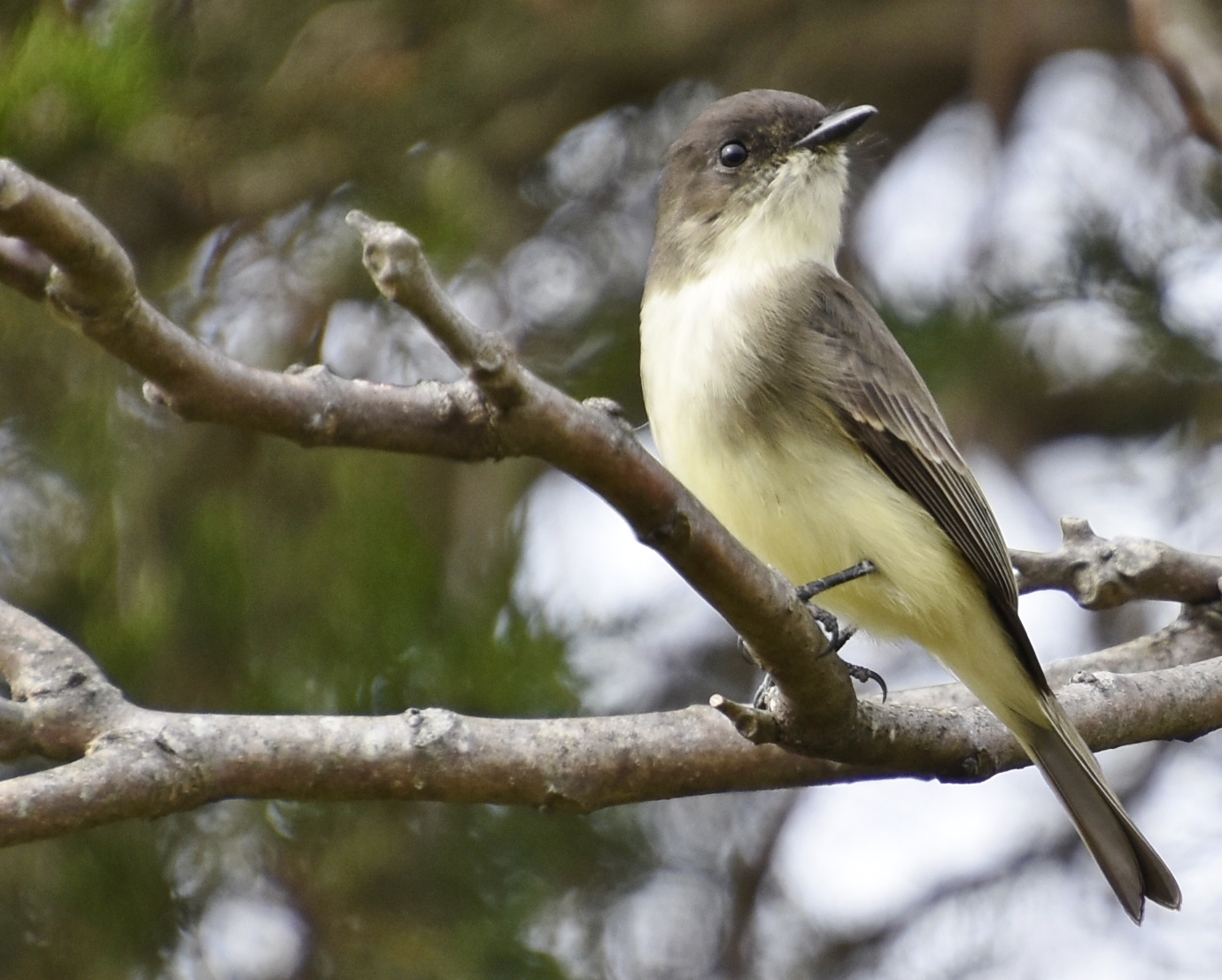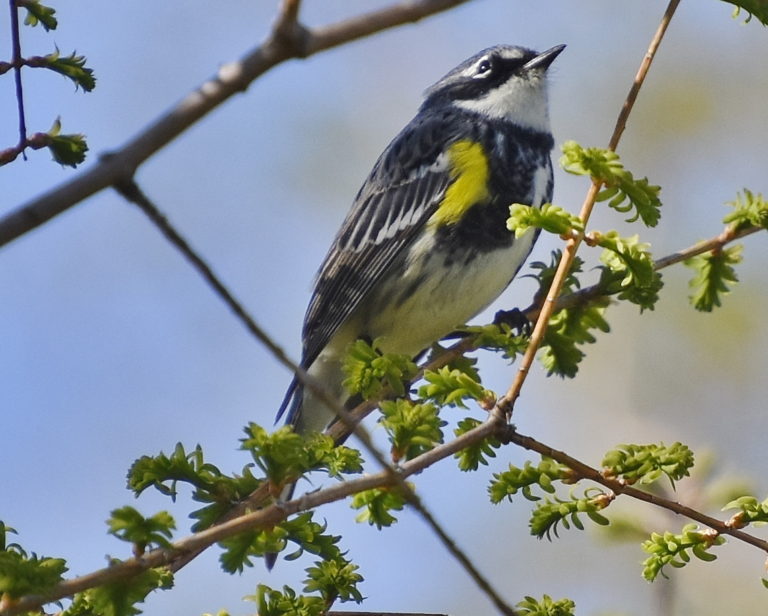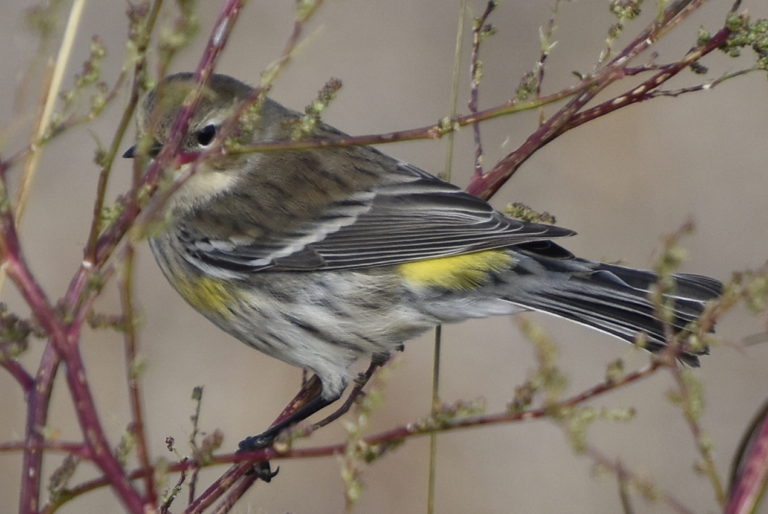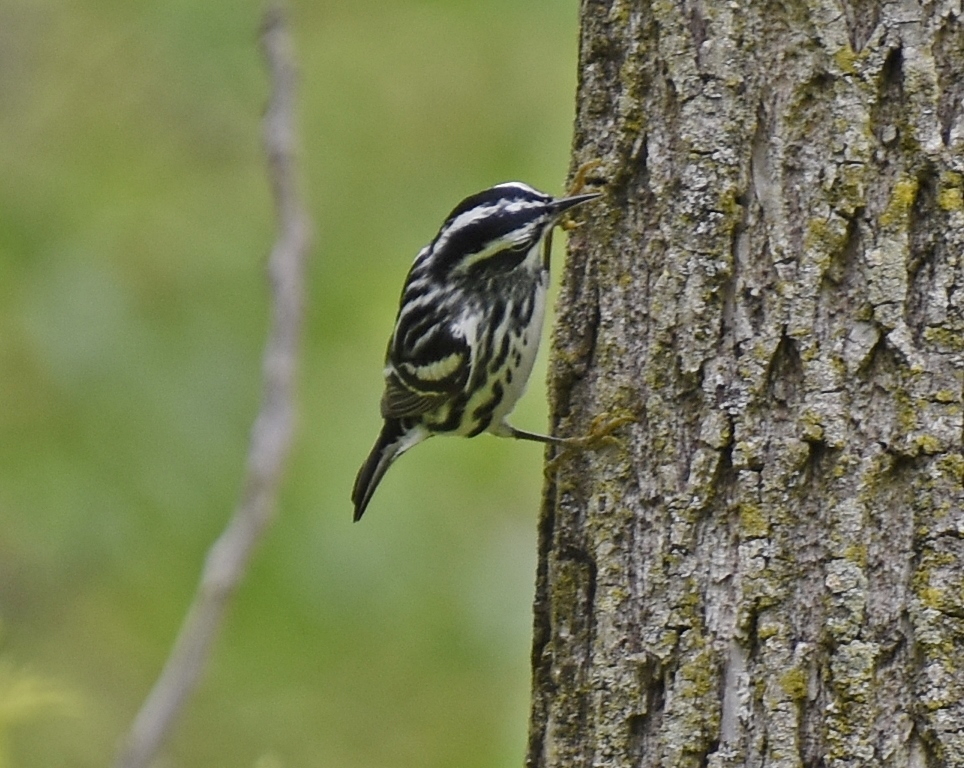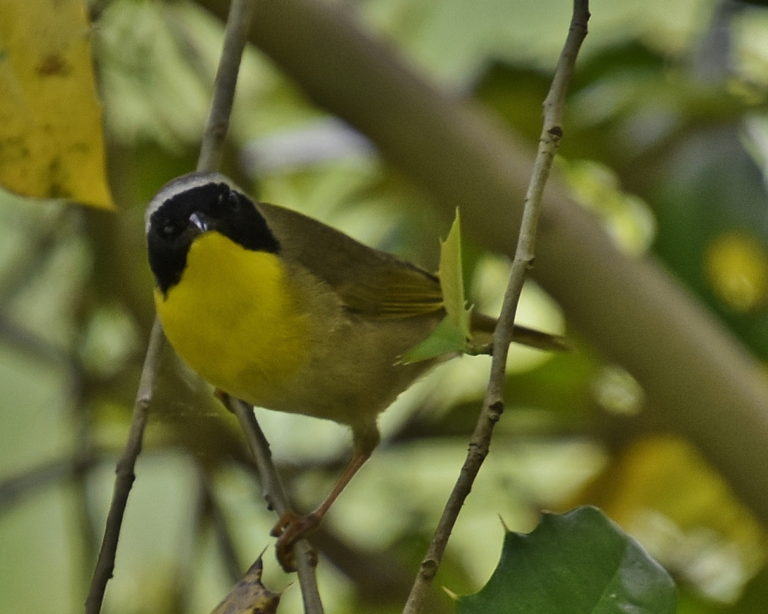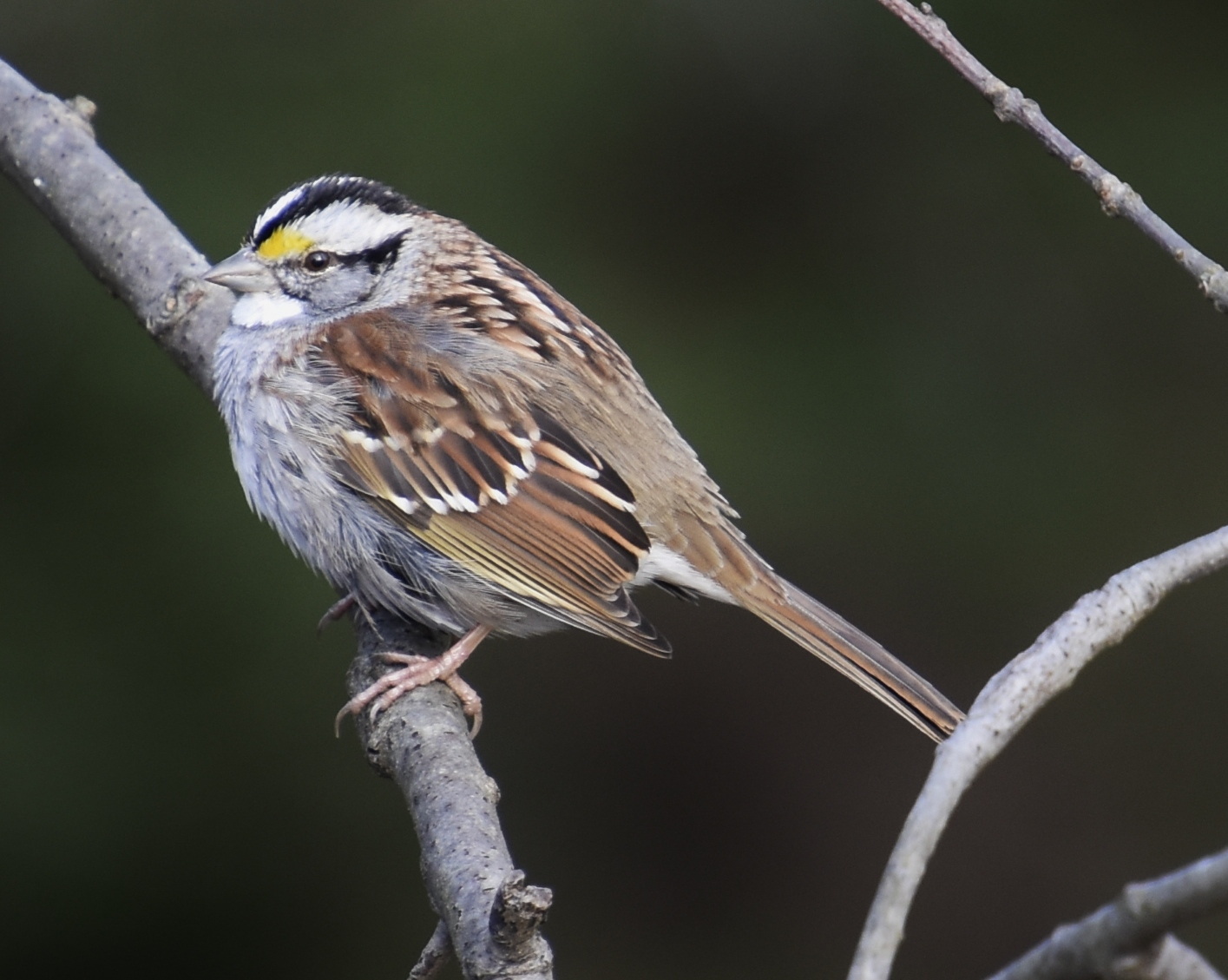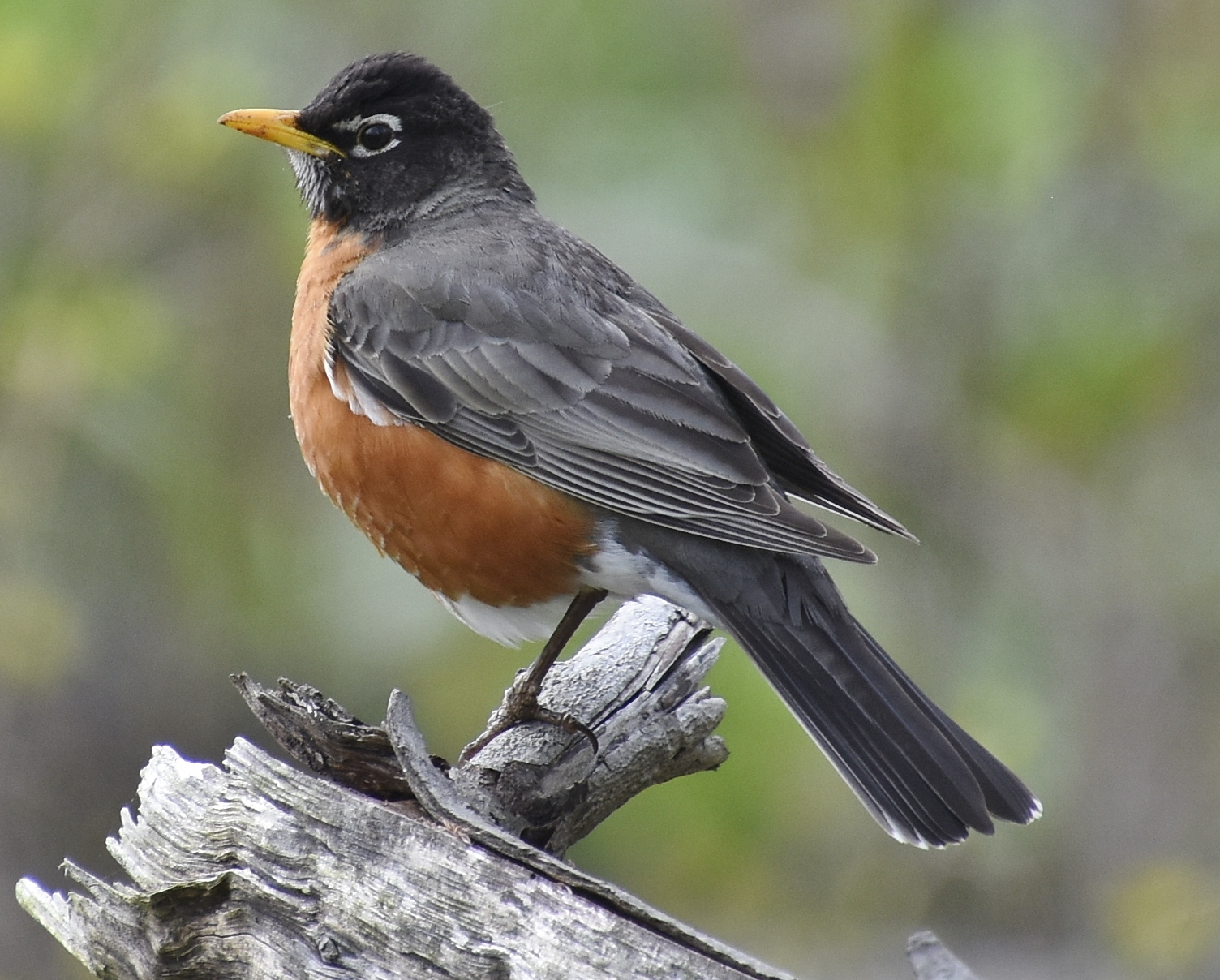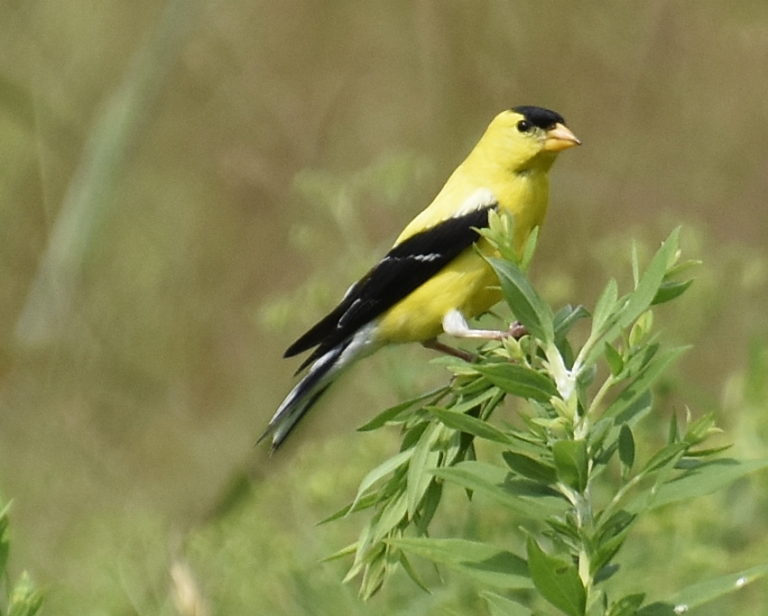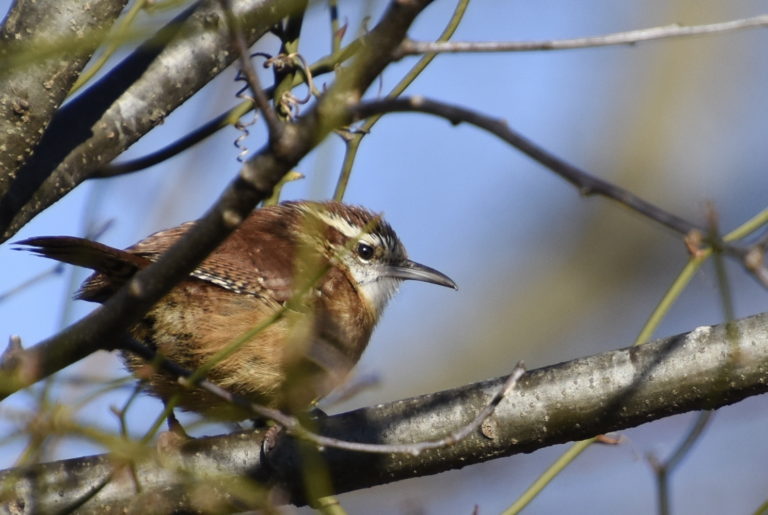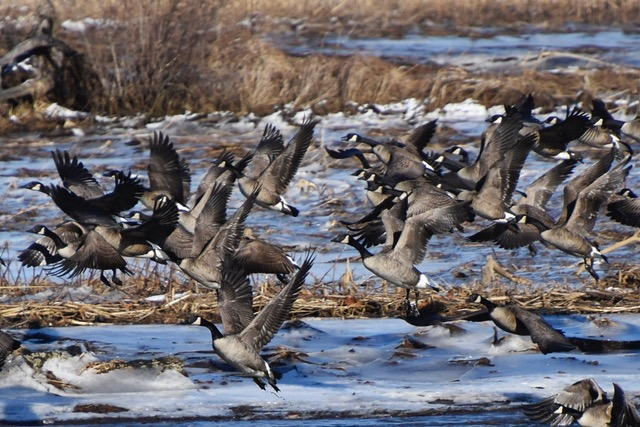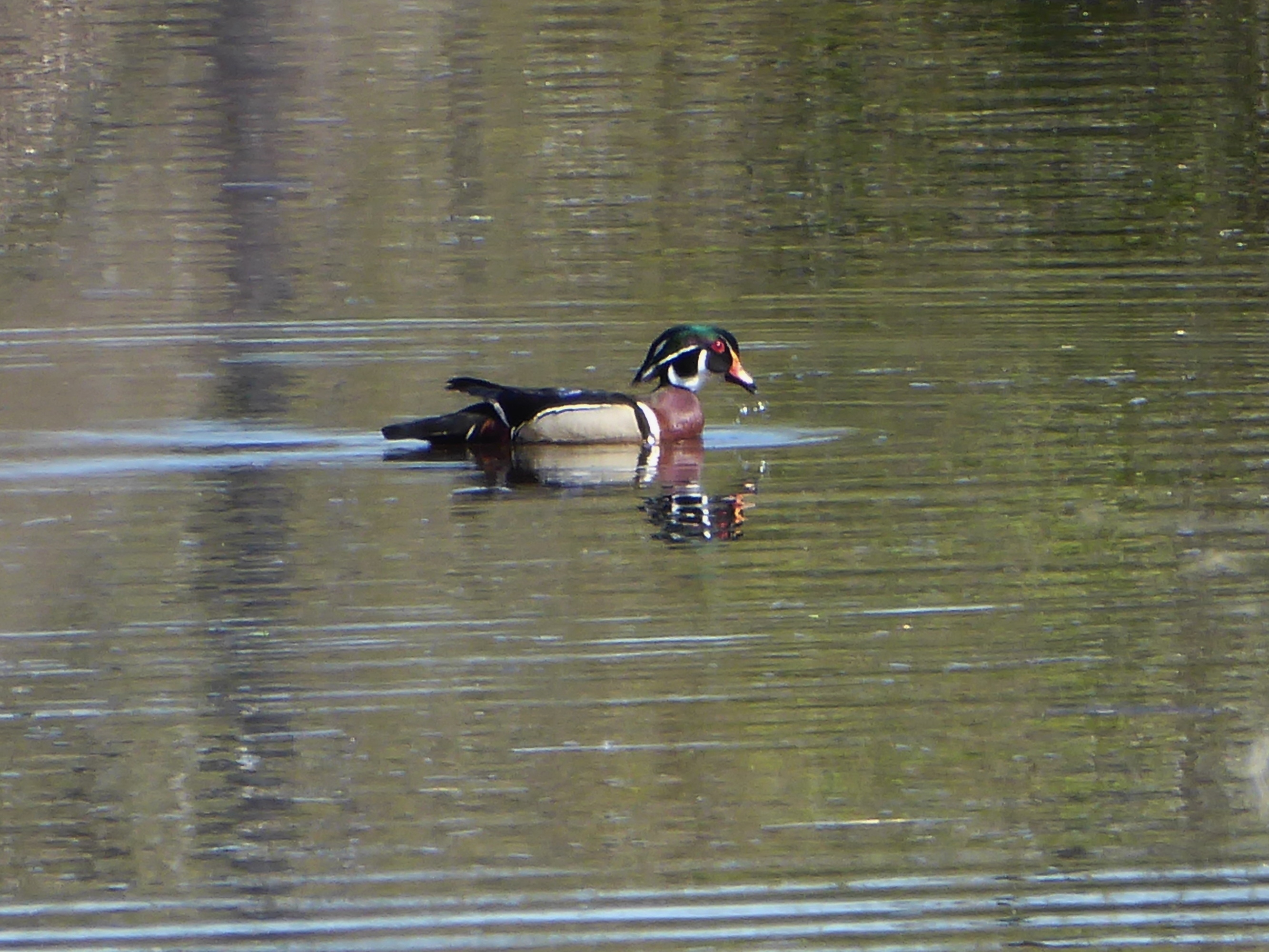Birders are no different than people, in that they eagerly await the renaissance brought on by arrival of spring. We begin looking for signs in February as the early migrants make their appearance. Red-winged Blackbirds can be found in our area all year but migratory flocks start moving in led by the males whose trilling can be heard throughout our marshes and wetlands.
Another early migrant, Eastern Phoebe, is a flycatcher which can also eat fruits and berries; a few show up as early as February, with more in March and April.
Another song bird, Yellow-rumped (or Myrtle) Warbler, can also be found in our area and particularly on the coast during the winter. As we enter into mid and late April these warblers lose their drab winter appearance and take on their beautiful breeding plumage. They’re quite common on our campus and you can see them flitting in and out of the budding trees along the perimeter path, as well as our woodland trails and meadow. They breed to our north so they will be moving on as May passes.
Black-and-White Warblers are also early migrants; the distinct striped pattern, and the habit of creeping along branches and tree trunks relatively close to the ground, make this bird relatively easy to spot along the woodland trails.
Common Yellowthroat, with the male’s distinctive black mask, is another early migrant. Also making an early appearance is Palm Warbler, bright yellow in color with a distinctive chestnut-colored cap.
We also note changes taking place in our resident birds and wintering migrants. Probably the easiest to pick out is Northern Cardinal, as the males become very active as early as February; their melodic whistling can be heard all over our campus.
White-throated Sparrow is a winter resident, and common at our feeders. We see two morphs (forms), some with tan crown stripes and others with white stripes. As spring approaches, you may see the latter form’s white head stripes and throat increase in brilliance, offset by intense yellow lores (that’s the patch of yellow that extends from the base of the bill to the eye).
Hermit Thrushes are the only spotted thrushes we are likely to see in the winter, but they become more abundant as spring nears. It is not uncommon to see two or three on a walk through our trails. Both White-throated Sparrow and Hermit Thrush breed to our north and will not be seen in the summer.
Other common birds of our campus lose some of the pallor of winter and take on a more vibrant coloration. American Robins are an example of this.
Similarly, male American Goldfinches discard their drab winter coloration, molting to brilliant yellow with black wings and cap. Others, like Carolina Wrens, become more vocal; they seem to carry on little conversations as one bird is answered by another.
[goldfinch, carolina wren]
Other harbingers of spring to look for include changes in bird behavior. The large flocks of Canada Geese are replaced by the geese pairing up as they get ready to breed; if you look in our marshes and wetlands you might see their nests, and very soon now, their hatchlings. The large flocks of Ring-billed Gulls that line the banks and mudflats of the Rancocas Creek suddenly pick up and leave overnight for their breeding grounds to the north.
Gradually our wintering ducks decrease in numbers and Wood Ducks, scarce or absent in winter, become abundant.
We should all be thankful to live in a place where, no matter what woes may befall us, we can still enjoy the unfolding of the seasons by just stepping outside for a nice little stroll around our campus.
Text and photographs by Robert Koch

